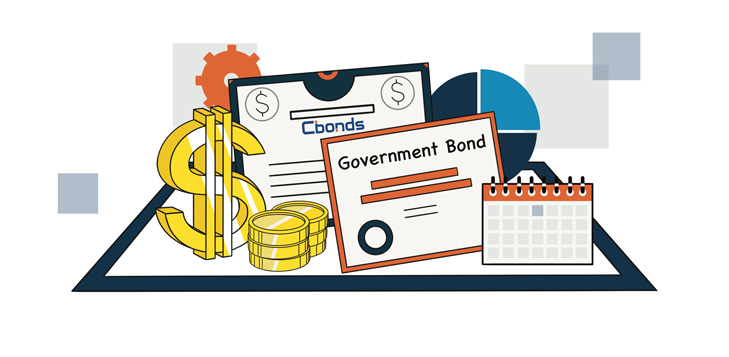How the shares differ from bonds, which of the securities will bring a larger percentage of profit
Securities are one of the most popular and profitable investment assets, but the investor is always faced with the question of what to choose shares or bonds.

In order to make the best choice, you should know how the shares differ from bonds, and which security is more suitable for you.
Promotions and bonds are two popular types of securities that investors use to make a profit.
The shares are shares in the company, with remuneration in the form of dividends, and bonds are debt obligations that undertake the issuer to pay the owner a certain amount with interest after some time.
It should be noted that these two tools differ not only in the mechanism of profit, but also with the level of risk.
The main differences between shares and bonds
The easiest way to understand the main differences, these two types of securities using a comparative table:
| Criterion | Stock | Bonds |
|---|---|---|
| The right to manage the company | Yes (through voting at meetings of shareholders) | No |
| Guaranteed income | No (income depends on the profit of the company) | Yes (by the coupon) |
| Growth in market value | Yes (can grow significantly) | Limited (repayment by face value) |
| Taxation | Dividend tax, usually higher | Percentage tax, usually lower |
| Risk of capital loss | High (depends on the market) | Below average (especially in state bonds) |
| Priority in issuer bankruptcy | The latter in line | Above shares (in case of bankruptcy) |
| The period of possession | Unlimited | Limited to repayment |
| Inflation effect | Profitability can overtake inflation | Real profitability can decrease |
| Regularity of payments | Usually - quarterly | Once every six months or year |
| Fixed profitability | No | Yes |
Promotions and bonds are two completely different in essence of the tool. The action makes an investor a business co -owner. He receives a share in capital, and with it - the right to vote at a meeting of shareholders.
The bond, on the contrary, gives neither property rights nor the opportunity to participate in management - this is just a form of a loan: you give money to the company or the state, and they promise you to return it with interest.
From the point of view of profitability, the shares are more unpredictable. Dividends depend on the profit that the company will show, and the market value of shares can both grow at times and fall.
Bonds most often give a fixed income - it can be calculated in advance, especially by public securities. But at the same time, bonds, as a rule, do not grow in price - in most cases you will simply receive a face value when repayment.

Risk is another important difference. In the case of bankruptcy, the shareholders receive their money in the last turn, after all lenders and bond holders. That is why bonds are considered more reliable, especially when it comes to state. On the other hand, in the case of rapid growth of the company, it is the shares that can bring many times more profit.
Taxes are also different. Contact dividends are often taxed at a higher rate than a coupon income from bonds. In addition, the frequency of payments can vary: dividends are most often paid once a quarter, and coupons for bonds - once every six months or a year.
What is more profitable: promotions or bonds?
If we consider profitability, then shares, as a rule, can bring higher profit, especially when it comes to large companies that pay dividends.
| Name | Type | Profitability, % per annum | Risk level | The frequency of payments |
|---|---|---|---|---|
| Enbridge Inc. (ENB) | Promotion | 7.4 | Average | Quarterly |
| British American Tobacco (BTI) | Promotion | 7.2 | Average | Quarterly |
| Altria Group (MO) | Promotion | 6.9 | Average | Quarterly |
| Verizon (VZ) | Promotion | 6.2 | Short | Quarterly |
| Philip Morris (PM) | Promotion | 5.8 | Average | Quarterly |
| Pfizer Inc. (PFE) | Promotion | 4.5 | Short | Quarterly |
| Chevron Corp. (CVX) | Promotion | 4.2 | Short | Quarterly |
| At & t inc. (T) | Promotion | 3.95 | Short | Quarterly |
| Enbridge 2029 bonds | Borders. bond | 5.6 | Average | Once every six months |
| AT & T 2032 bonds | Borders. bond | 5.2 | Average | Once every six months |
| Pfizer bonds 2033 | Borders. bond | 4.7 | Average | Once every six months |
| Chevron bonds 2035 | Borders. bond | 4.9 | Average | Once every six months |
| US bonds 10 years | State. bond | 4.3 | Very low | Once every six months |
| German bonds 10 years old | State. bond | 2.6 | Very low | Once a year |
| Poland bonds 2027 | State. bond | 5.0 | Short | Once every six months |
| Italian bonds 2030 | State. bond | 5.1 | Average | Once a year |
For example, companies like AT & T or British American Tobacco can bring up to 6-7% of annual dividends. And in some cases, dividends can reach up to 10% or more percent per annum.
At the same time, dividends are paid from the profit of the company and in case of its absence of payment can be completely canceled.
Unlike shares, bonds offer a more stable income. However, their profitability can vary depending on the purchase price.
The highest profitability for corporate bonds can be 10-12% per annum, but these are already risky bonds.
The safest government bonds, such as US bonds, bring about 2-3% per annum.

This can be attractive to those who want to minimize risks. However, if bonds are bought at a price below the face value, their real profitability may be higher.
For example, if you buy a bond with a face value of $ 1,000 for $ 950, then your actual profitability can be more than 3%, even if the coupon income is only 3%.
Example: if you invest $ 100,000 in 5 year -old bonds with a yield of 3% per annum, but buy them at a price of $ 950 per bond (nominal value - 1,000 dollars), then for a year you will receive more than 4% of the profitability, since the difference in the price of sales is also taken into account.
If you invest in shares with dividends 6%, you will receive $ 6,000, but it should be borne in mind that the price of the shares itself can both increase and fall.
Promotions and bonds have their advantages and disadvantages. Promotions can bring more profit, but more risk is associated with them. Bonds offer a more stable income, but their profitability may depend on the market price at which they are acquired.
In my opinion, it is best to diversify investments, part of the funds to invest in shares with good dividends , and part in government bonds with low risk. A universal option may be an investment in corporate bonds.
